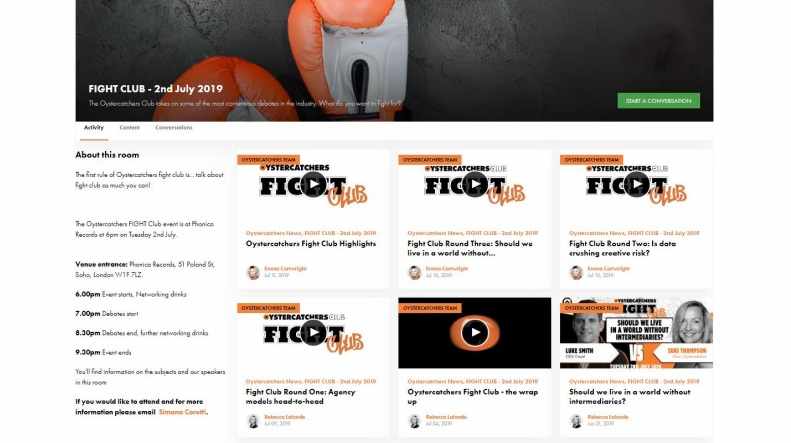Access to a network of peers has always been part of the implicit value proposition for business and professional media. But it has largely been reliant on live events and serendipitous or sometimes haphazard encounters in the lunch queue or at the bar.
Just a few years back, every B2B publisher I knew was running a Linked In Group. They can still work, but some have become unwieldy and hard to search, and in the absence of strong hands-on moderators, can veer off topic or become too salesy. Linked In had the apparent virtue of being “free” but once you included the cost of human moderators it seemed harder to justify the RoI.
Some B2B media are now experimenting with more closed online communities with greater functionality and the ability to restrict some content to registered or paying customers. (I should probably declare an interest here. The rest of this article is based on an event I attended put on by Zapnito, a community online platform to showcase expertise, so the examples are from their customers. Of course, other services are available, but I think the lessons are universally applicable.)
One of the challenges of developing (or white labelling) a b2b community site is linking it directly to revenues. Can you definitely prove that it drives subscriptions or advertising or sells event tickets? I think this might just be missing the point: online communities can have a strategic or marketing value, which enables the media business to generate revenues elsewhere.
Online communities enable targeted marketing to engaged audiences
The mass digital marketing that worked just a few years ago is now less effective, explained Susanna Kempe, former CEO of WGSN and conference marketing veteran of IIR and Informa.
People are over saturated with information and marketing messages. However, by carefully segmenting your audiences and building online communities, where you share content of value, it is possible to create an environment where your audience chooses to come and engage with you.
Then your task is to keep providing interesting and valuable content, help them connect with each other, recognise and reward their contributions and make it easy for them to buy from you. Content needs to be tiered, so think carefully about what is offered for free to attract interest, what requires registration, and what is sufficiently valuable to charge for.
Communities are self-selecting and self-segmenting. With care, you can repackage content for each segment, and then market individually to each segment. For example, in a conference business, community segments might be sponsors, advisory board, speakers and delegates. Targeted marketing is much more effective – and cost-efficient, and well-run online communities can help you target exceptionally well.
Online communities build loyalty with an important audience
Nature is an immensely venerable science journal, and the group now has in total 50 journals under the “Nature” brand, explained James Butcher, VP Journals at Springer Nature. It only publishes 7% of the papers submitted, but its relationships with its authors are hugely important.
Using the Zapnito platfrom, Nature has created an online community where its subscribers can connect with each other and with authors. They have used this to publish long-form content that provides extra context for the academic papers published in the journal itself.
“Behind the paper” tells the story of how the academic research was carried out, while “after the paper” articles describe the impact of the research. “From the editors” provides an insight into exactly what the 400+ editors are looking for, useful guidance for submitting academics. And editors “on the road” articles share their experiences at conferences and meetings around the world.
Nature can’t directly attribute revenue to the articles published on their community platform. But they know from the level of views and engagement that they are providing extra value and insight to their subscribers and deepening their relationships with publishing authors.
Online communities can strengthen real world b2b relationships
Oystercatchers was a start-up in the agency world, initially running a series of face to face events for its membership of top agencies and major clients. Founder Suki Thompson then sold the business to Centaur where it sits alongside other marketing brands.
They launched an online community on Zapnito to keep members involved with content and making connections in between live events. The community has been set up with three tiers of membership: online only, full (paid) membership which includes invites to a series of niche events with high level speakers and networking, and fellows, who can get involved in contributing content and pay a higher membership fee.
The online community now includes 100 agencies and 400 clients and attracts 7000 visits a month. It acts as a feed for future members and helps to strengthen the connections between paid members and promote live events.
***
So I believe it pays to think quite broadly about the strategic value of online b2b communities, to establish deeper connections, attract future customers and create opportunities for highly targeted marketing.
If you’d like to discuss how you might be able to build an online community for your business or professional audience, and what strategic value it might create for your organisation, do get in touch for a chat over coffee.

